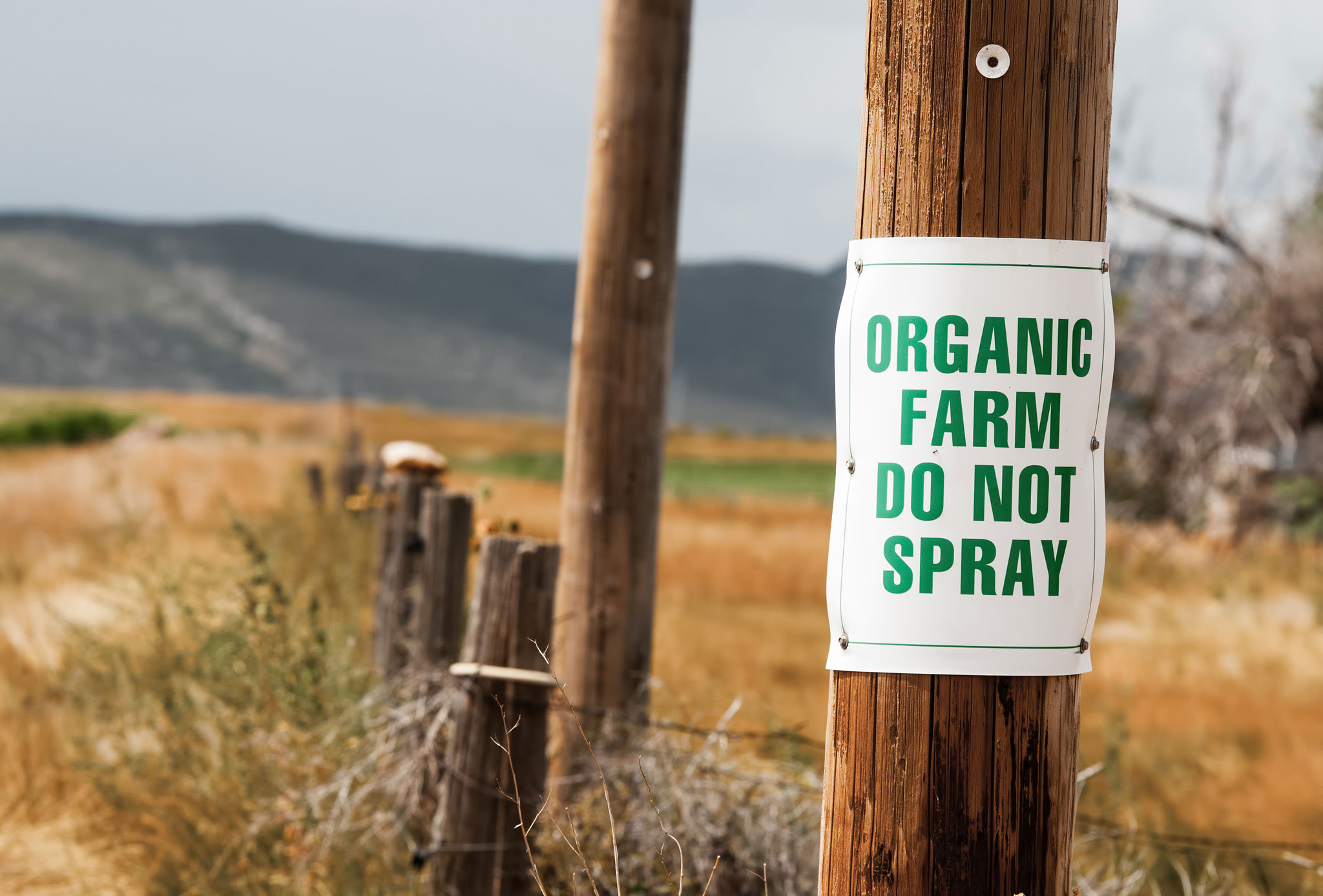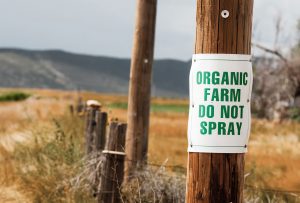- Published On: May 18, 2021
- Author: Bryce Irlbeck
Every year organic farmers hear about unwanted chemicals drifting from one field to another and damaging crops. But how concerned do you need to be about preventing pesticide drift?
Unfortunately, pesticides drifting onto your organic farm is a real possibility. And the consequences can be significant. You’re at risk of crop damage, income loss, and even revoked certification.
But with good preventive measures, you can reduce the odds of pesticides drift on your organic fields.
What is pesticide drift?
First, let’s discuss what pesticide drift is and how it occurs. Pesticide drift occurs when a pesticide applied to one field unintentionally moves to another field. According to the National Pesticide Information Center, this can happen during or after application. “Particle drift” occurs when droplets or dust travel during application. When it happens after application, it’s “vapor drift.”
For organic farms, herbicides are the primary culprit for pesticide drift. This is because some herbicides like dicamba are more susceptible to drifting. And it’s more likely to occur if applicators spray during conditions such as high winds.
Unfortunately it’s not a rare occurrence. The EPA recently estimated that up to 70 million pounds of pesticides are lost to drift each year.
Preventing pesticide drift on your acres
Organic farmers can’t control pesticide applications, but there are several steps we can take to help avoid drift.
Work with your neighbors
The key to avoiding drift on your organic fields is good communication. Talk to your neighboring farmers early on and be open and honest about what you’re doing.
Try to work with each other on your rotation plans. Is your neighbor going to plant a dicamba-resistant crop next to your field of organic soybeans? Consider planting those soybeans elsewhere. It may not seem fair to have to change your plans, but it’s a lot easier than pursuing a lawsuit later because drift ruined your field.
And it may seem obvious, but it’s worth a reminder: approach your neighbors as you would want to be approached. Everyone has the right to grow their crops the way they see fit and we all need to be respectful of each other’s choices.
Remember, most farmers want to be good neighbors, so give them that opportunity with friendly communication.
Notify companies that spray
Maybe you have power lines running through your fields. Or a railroad that borders your farm. Think of any entities that may use pesticides and contact them. MOSA Certified Organic recommends requesting a “no-spray” agreement. In these situations the municipality or company will cut and clear the area once and then the landowner must maintain it.
Register with DriftWatch.org
The DriftWatch website designed by Purdue University allows organic and specialty crop farmers to label their fields on a map. Chemical applicators regularly check the site to see if they’ll be spraying near organic crops, so they can take additional precautions for preventing pesticide drift. The tool is intended to avoid drift from happening. And it also serves as a good backstop if issues arise. If you suffer drift damage, this is strong evidence that you proactively made others aware of your organic fields.
Post signs at field entrances
Spraying the wrong field is not a drift issue. But is happens, so it’s worth mentioning. One way to prevent this is to post signs indicating the field is organic field and must not be sprayed. Place these in obvious spots at gate entrances or where an applicator would pull into a field. Many of these signs can be purchased online. (AgriSecure members are encouraged to contact their Account Executive and request a design file that can be printed locally).
Keep buffer zones
We recommend every organic field has buffer zones planted around the perimeter. That way if drift does happen, there’s a better chance it won’t reach your organic crops. Design your buffers as you see fit and use plants that work best for your farm.
On B&B Irlbeck Farms, we use perennials. But if you’ve locked in a high contract on a crop with a low tolerance level, we recommend that you use a bigger buffer zone.
I have drift damage. Now what?
Even when you have sound measures in place for preventing pesticide drift, it can still occur. So what steps can you take if you discover damage to your organic crops and suspect it’s from drift?
First, don’t try to hide it. The repercussions of doing that could be worse than confronting the problem head on.
Second, contact your certifier, or if you’re an AgriSecure member, contact us. We’ll have a discussion to try to figure out what drifted, when it happened, and why it happened. Then we’ll go to the certifier and discuss the best remediation plan.
Remediation all depends on the extent of the damage. It may mean selling the crop as conventional. The worst-case scenario is that you’ll have to retransition the field.
If you experience significant monetary losses, there can be recourse if the offender’s insurance policy includes chemical drift liability. Currently, government-subsidized crop insurance does not include drift in its coverage.
Sometimes your only option is to go to court. But be warned it’s often a lengthy process, and drift damage can be difficult to prove. There’s also no guarantee you’ll be made whole on the damages.
Work with us to ensure you’re preventing pesticide drift on your organic crops
Don’t let worry about preventing pesticide drift keep you up at night. If you’re concerned about how you can protect your organic crops — or if you’re dealing with drift damage — contact us. We’ll help you navigate this issue so you can get back to focusing on growing your organic profits.
By Bryce Irlbeck, AgriSecure Founder and Owner of B&B Irlbeck Farms
Get in the know
Our newsletter, it’s a quick read. You’ll get industry news plus all the latest organic insights. Who doesn’t want that?



